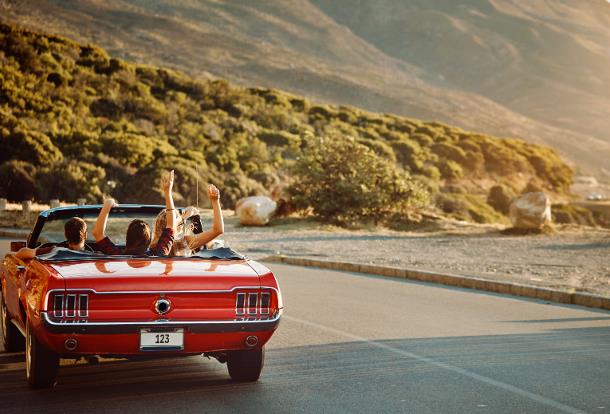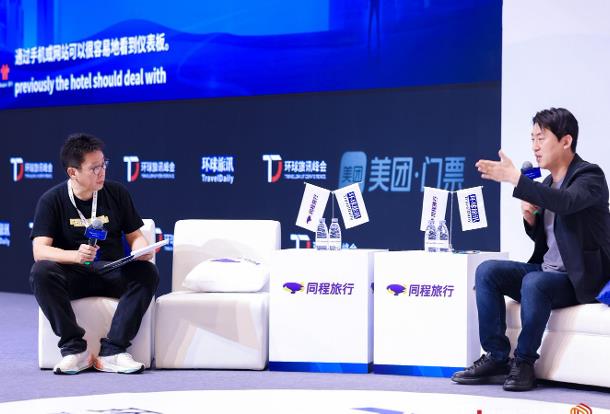ChinaTravelNews , Ritesh Gupta – Car rental, car sharing, car hailing…the choice of moving around in a car from one location to another is increasing day by day in China. But with choice and so many business models comes the challenge of establishing a brand in a fragmented market, and the category ends up witnessing a hefty marketing spend from different players.
So as campaigns for brand awareness, mobile app downloads, sampling of a service via a cashback scheme etc. float around, the onus is on an astute marketer to keep marketing acquisition cost relatively lower.
As a major player, eHi believes it has benefited from several factors, and one of them is competition among the likes of Uber and Didi Kuaidi. eHi, which saw its top line increasing by 78.9% year-over-year and achieved bottom line profitability in Q3, is along banking on the penetration of smartphones, be it for high-end handsets or low-cost “iPhone” clones. And with Ctrip being a shareholder, eHi has succeeded in stepping up the contribution of digital bookings, especially the ones coming via mobile apps.
“Ctrip is a big channel (for transactions) for us. eHi has capitalized on this “stakeholder-relationship”, as Ctrip has been featuring and promoting eHi’s services on its official website, mobile client application and its various offline channels,” shared Leo Cai, EVP - Marketing and Sales, eHi. “The profile of “Ctrip customer” matches with our target audience, and there are specific packages that have been developed for users. We have witnessed that the conversion rate (eHi’s online reservation system is integrated into Ctrip’s app) post our association with Ctrip has gone up. It’s (the chance of a transaction) definitely higher with Ctrip than a casual download of an app,” said Cai. He also added that since Uber and Didi Kuaidi have been progressing aggressively, offering an option for “subsidised” travel, this in turn has helped the category on the whole in terms of uptake of various services available.
Sharp focus
Ray Zhang, eHi’s chairman and chief executive officer recently shared that in Q3 in total 92% of reservations were made via mobile and website.
“We are testing our website, and mobile app every day,” shared Cai. He said iterations and update are done quite regularly to make sure the user experience is top notch. “There is new release (of a feature or fine-tuning or a new version) on the website every three days, whereas the same is done on mobile every week.”
So what is being improved upon? “As for the website, it could be how we display the availability of cars, and in what order they are shown. It could be description, price, new arrivals, the size of icon – large car, compact car, electric car etc. The majority of the designing and development work is done in-house. This is because the requirements are very unique – one can’t find such expertise or domain knowledge offshore,” explained Cai.
The CTO at eHi is at the helm of the digital infrastructure, but teams are separate for website and mobile. “The common factor here could be sharing of user interface, but there are aspects that also need to be catered separately in case of PC website and mobile. For instance, the purchase decision can be influenced by a simple thing like the button or key that are going to be pressed on an mobile app. This level of detailing is must as this can tilt the decision in our favor. Our apps are superlative, and are on par or even more advanced than those in the mature markets,” said Cai.
One of the core objectives of the team is to handle peculiarities related to handsets. On the face of it, one might be only preparing an app for iOS and Android but there is a certain level of customization, as Cai also points out, that needs to be handled. There could be incorporation of certain iOS features into local handsets based on Android system, and this calls for a diligent approach to designing an app.
The results are positive, according to Cai. “We are witnessing 10000 downloads of our app on a daily basis,” he shared. During Q3, there were more than 780,000 mobile application downloads. As of today, the company has crossed the 2-million app download mark.
As for the key to running an efficient app, Cai said the focus should be on ease of use, clean user interface, making a visual impact, and also bringing down the number of clicks – say from 5 to 3 for a transaction. “Also, we incentivize app users – say we would offer RMB 10 upfront discount for booking via app vis-à-vis via our website. So this would encourage users to book via mobile,” he said.
Being astute with ad spend
As we have observed, travel e-commerce players are using a variety of options to gain downloads. For instance, travel brands have been focusing on acquiring new mobile users through offline channels.
And once mobile starts contributing meaningful revenue, then brands are also looking at curtailing their expenditure. As Qunar pointed out recently, as the team shifts more of its marketing budget to mobile channels, and as RoI driven strategy enable it to generate high quality returns from those channels every quarter, it believes online marketing expenditure will continue to decrease as a percent of total revenue.
“We are very particular about where the download (for our mobile app) is coming from. We mark every channel with a label – for instance, a download from Huwaei smartphone or activation of an app based on outdoor ad or online pop-up, we keep track of everything,” said Cai. He acknowledged that marketing attribution is important in a highly competitive category such as travel, but the industry needs better means to target audience accurately. “Our audience is typically 25-35 or 40 years, we need to target gender (80% male), income group (RMB 10,000 per month) or more, white collar worker…it’s about “lifestyle”, for ones who like to move around, travel etc.” He further added, “If we show our ad on a airplane seat or at airport rather than in a bus, then it’s make more sense. So one needs to correctly identify the profile of travellers, and show our brand/ message accordingly.”




